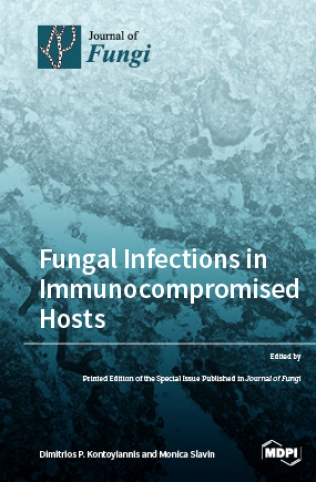金针菇子实体的异质性、二形性和菌托状结构
IF 4.2
2区 生物学
Q2 MICROBIOLOGY
引用次数: 0
摘要
过去二十年来,金针菇因其药用价值和营养价值在亚洲引起了广泛关注。在本研究中,金耳基生菌丝体在自然生境中经常被Stereum hirsutum子实体包围,在人工栽培中也偶有发现。通过对菌膜内两种不同菌丝体的观察和 ITS 序列的分析,证实金二基生菌由 Naematelia aurantialba 和 S. hirsutum 两种真菌组成。金耳子实体的这种异质性确实有别于银耳中发现的褐曲霉(Tremella fuciformis)的同质菌丝,尽管其发育还需要另一种真菌 Annulohypoxylon stygium 的存在。基生孢子可在基生菌丝表面发芽并产生菌丝。但是,基生孢子在 PDA 培养基中只能萌发成酵母状分生孢子。当温度从 20 ℃ 升至 28 ℃ 时,N. aurantialba 的酵母状分生孢子可转化为假菌丝,或在 20 ℃、25 ℃ 和 28 ℃ 的诱导培养基(IDM)上转化为丝状细胞。这种二形现象在 N. aurantialba 中尚属首次报道。在 IDM 诱导培养基上培养的菌丝体和气生菌丝体中都能观察到大量的菌丝体状结构。本研究首次记录了其发育过程,包括基部夹持连接的突起的形成、突起处的伸长、分枝的产生以及最终的成熟。不过,还需要进一步观察,以确定类管结构是否能穿透 S. hirsutum菌丝。这些发现有望为这两种真菌之间的关系和相互作用提供有价值的见解,从而推动子实体的培育。本文章由计算机程序翻译,如有差异,请以英文原文为准。
Fruiting Body Heterogeneity, Dimorphism and Haustorium-like Structure of Naematelia aurantialba (Jin Er Mushroom)
Mushroom Jin Er has attracted widespread attention in Asia over the past two decades due to its medicinal properties and nutritional values. In the present study, Jin Er basidiocarps were often found to be surrounded by Stereum hirsutum fruiting bodies in their natural habitat and occasionally in artificial cultivation. The observation of two different kinds of mycelia within the hymenium and analyses of ITS sequences confirmed that Jin Er basidiocarps were composed of two fungal species, Naematelia aurantialba and S. hirsutum. This heterogeneity of Jin Er fruiting bodies is indeed distinct from the homogeneous hypha of Tremella fuciformis found in Yin Er mushroom, although its development also requires the presence of another fungus Annulohypoxylon stygium. Basidiospores can germinate on the surface of basidiocarps and produce mycelia. However, basidiospores in PDA medium can only bud into yeast-like conidia. The yeast-like conidia of N. aurantialba can transform into pseudohyphae with a change in temperature from 20 °C to 28 °C or switch into filamentous cells on an induction medium (IDM) at 20 °C, 25 °C and 28 °C. This dimorphic was reported for the first time in N. aurantialba. Haustorium-like structures were abundantly observed both within the hymenium and in the aerial mycelia cultured on the IDM. The developmental process was documented firstly in this study, involving the formation of protuberances with basal clamp connections, elongation at the protuberances, branch production, and eventual maturation. However, further observation is required to determine whether the haustorium-like structures can penetrate S. hirsutum hyphae. These findings are expected to provide valuable insights into the relationship and interaction between these two fungi, thereby advancing the cultivation of fruiting bodies.
求助全文
通过发布文献求助,成功后即可免费获取论文全文。
去求助
来源期刊

Journal of Fungi
Medicine-Microbiology (medical)
CiteScore
6.70
自引率
14.90%
发文量
1151
审稿时长
11 weeks
期刊介绍:
Journal of Fungi (ISSN 2309-608X) is an international, peer-reviewed scientific open access journal that provides an advanced forum for studies related to pathogenic fungi, fungal biology, and all other aspects of fungal research. The journal publishes reviews, regular research papers, and communications in quarterly issues. Our aim is to encourage scientists to publish their experimental and theoretical results in as much detail as possible. Therefore, there is no restriction on paper length. Full experimental details must be provided so that the results can be reproduced.
 求助内容:
求助内容: 应助结果提醒方式:
应助结果提醒方式:


